Acceptance theories
Acceptance Research
From 2 view sociology and psychology:
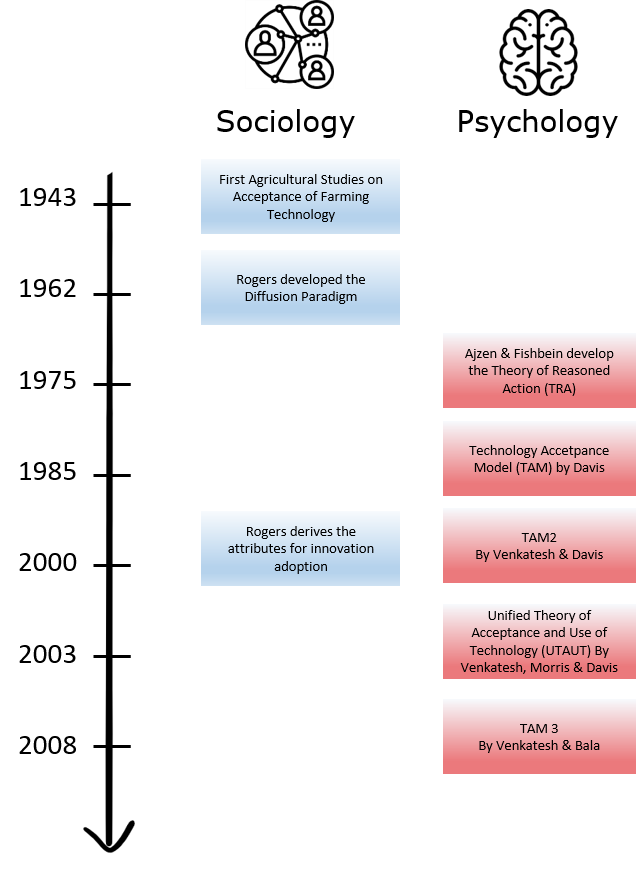
- Diffusion Theory
- Theory of Planned Behaviour
- Technology Acceptance Model
- Unified Theory
- Resistance Model
- Fogg Behaviour Model
- Nudge Theory Process
Diffusion Theory
The diffusion of innovations theory is a hypothesis outlining how new technological and other advancements spread throughout societies and cultures, from introduction to widespread adoption. The diffusion of innovations theory seeks to explain how and why new ideas and practices are adopted, including why the adoption of new ideas can be spread out over long periods.
 Modified from Crossing the Chasm, by Geoffrey A. Moore. ©Todreamalife, 2022
Modified from Crossing the Chasm, by Geoffrey A. Moore. ©Todreamalife, 2022
Reference: https://www.investopedia.com/terms/d/diffusion-of-innovations-theory.asp
Theory of Planned Behaviour
The Theory of Planned Behavior (TPB) aka Theory of Reasoned Action was developed by Icek Ajzen as an attempt to predict human behavior (Ajzen, 1991). The TPB posits that attitude toward the behavior, subjective norm, and perceived behavioral control influence behavioral intention.

Reference: Theory of Planned Behavior
Technology Acceptance Model
Developed by Fred D. Davis in 1989. Extension of the Theory of Reasoned Action (Ajzen & Fishbein 1980).
Predicts individual adoption and use of new technologies in a work context
Intention to use new technology is based on 2 factors: perceived usefulness and perceived ease of use.
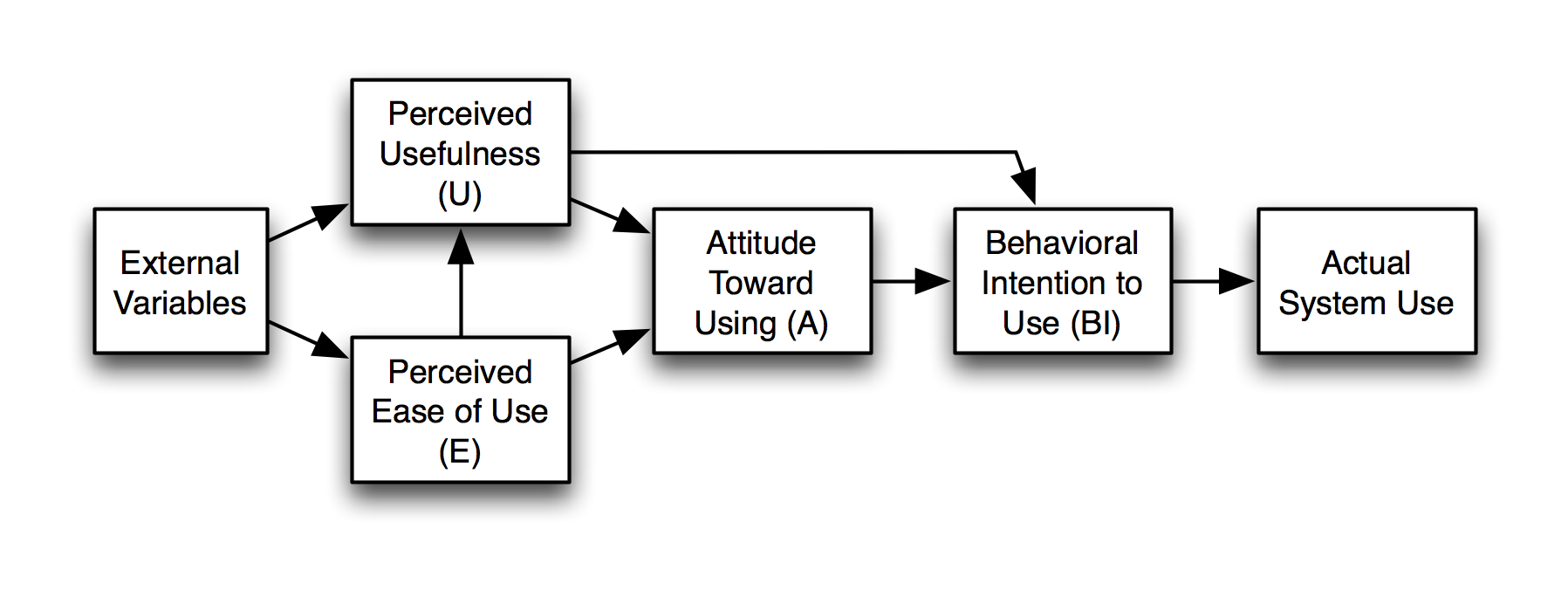
Reference: Technology Acceptance Model
Unified Theory
The unified theory of acceptance and use of technology (UTAUT) is a technology acceptance model formulated by Venkatesh and others in “User acceptance of information technology: Toward a unified view”.

Reference:
Field of Application:
- Use of various technologies within an organization (UTAUT 1): focus on Expectation of performance, Expectation of effort, Social influence, Facilitating conditions
- Use of various technologies within the consumer market (UTAUT 2): focus on Hedonic motivation, Price value, Habit
Resistance Model
Developed by MacVaugh and Schiavone in 2010
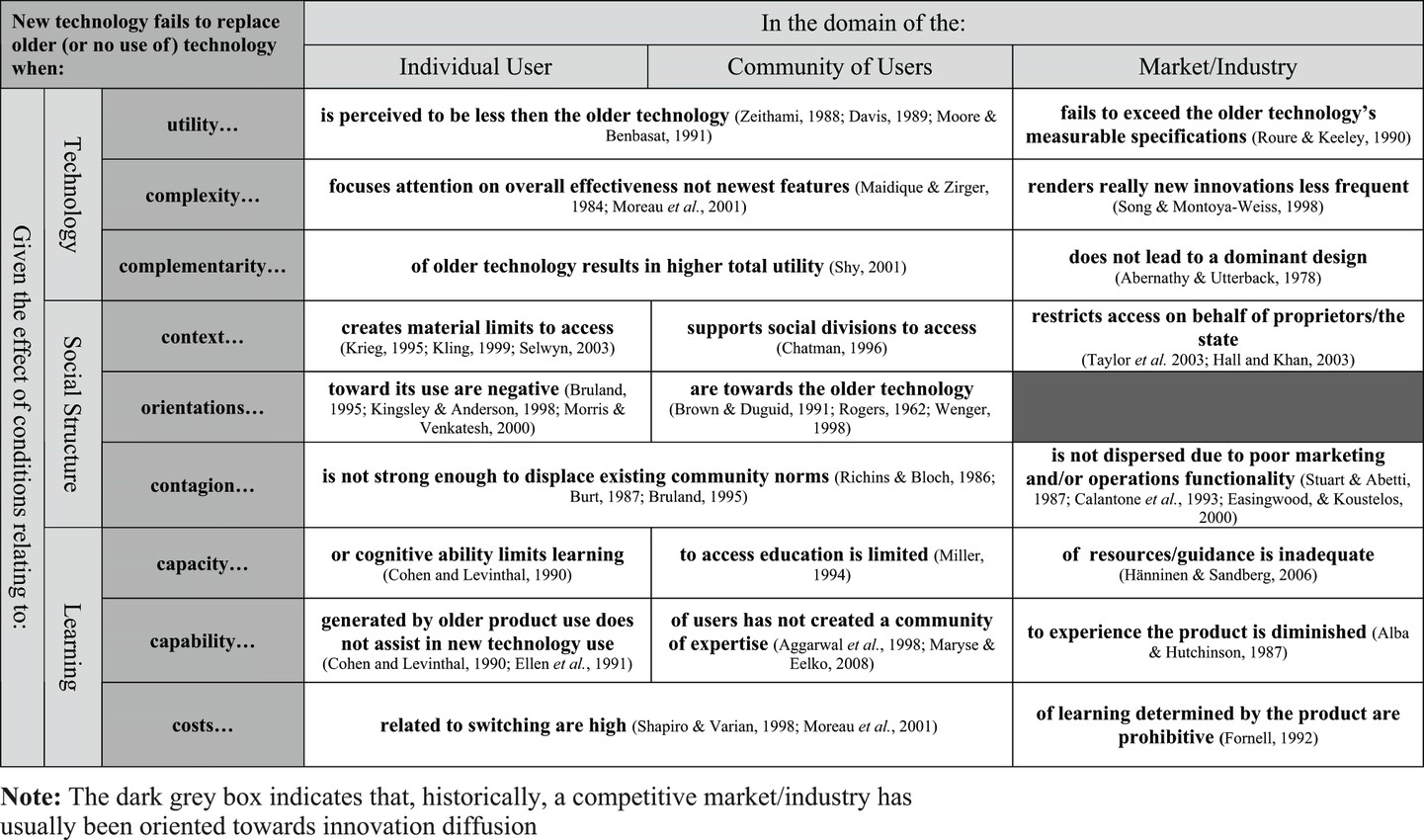
Fogg Behaviour Model
The Fogg Behavior Model shows that three elements must converge at the same moment for a behavior to occur: Motivation, Ability, and a Prompt/Trigger.
B = MAP or MAT
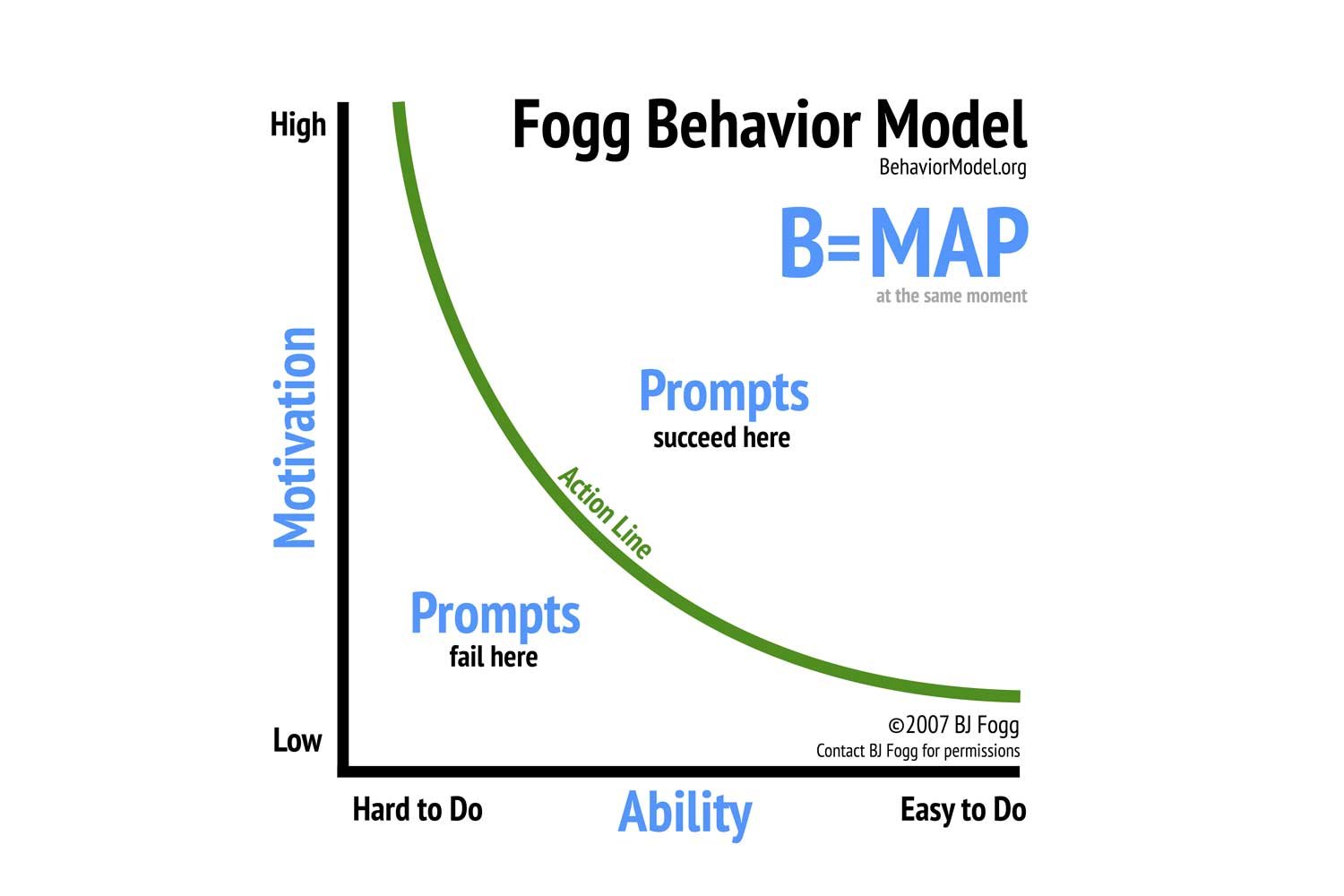
Reference: https://behaviormodel.org/
Nudge Theory Process
American academics Richard H. Thaler and Cass R. Sunstein are primarily credited with developing the nudge theory. They based a significant portion of their theory on research on “heuristics” conducted by Israeli-American psychologists Daniel Kahneman and Amos Tversky, which first appeared in psychological journals in the 1970s.
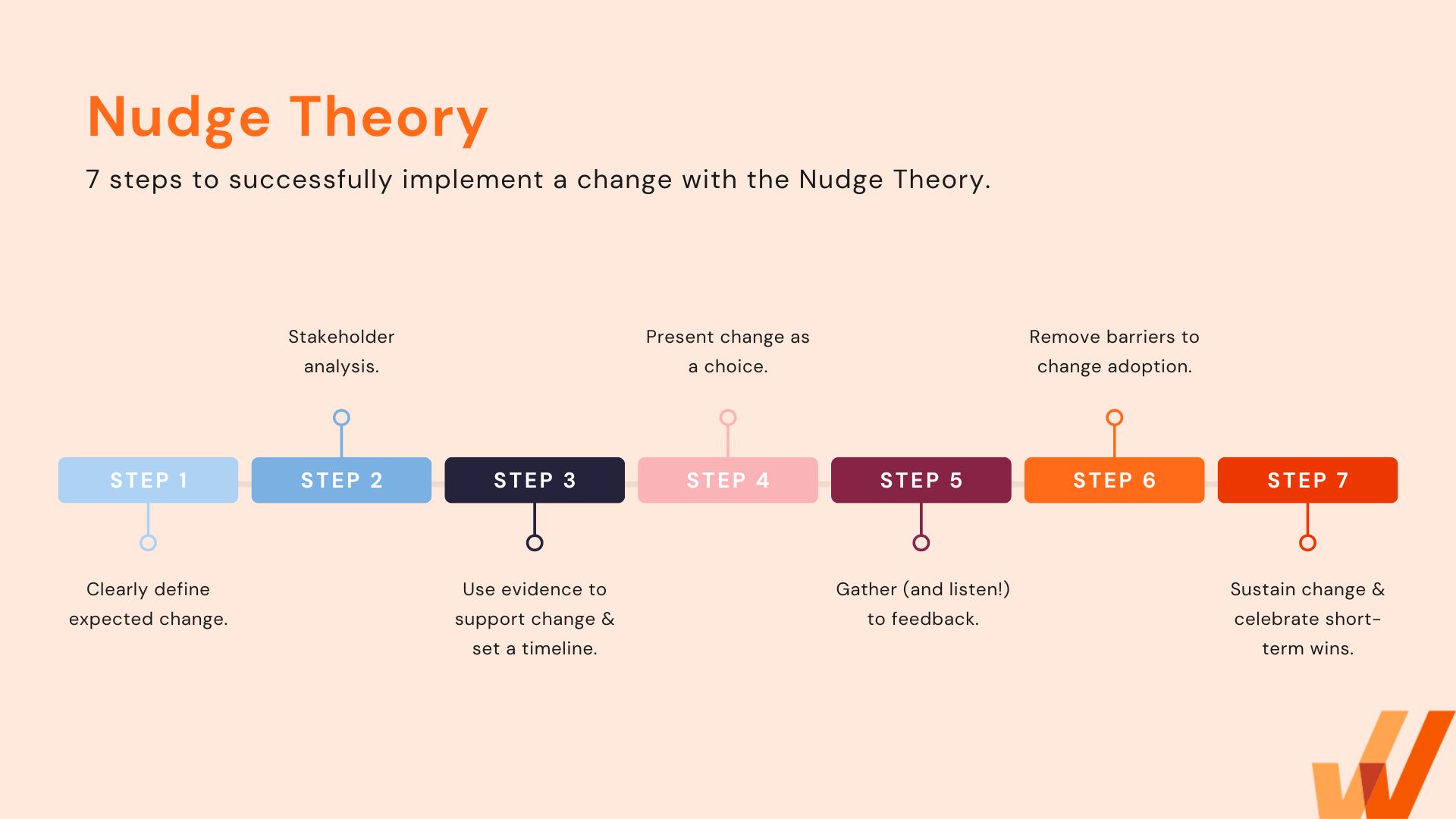
Some examples of common nudges include:
- Default Options: Automatically enrolling individuals in beneficial programs (e.g., retirement plans) with the option to opt out, increasing participation rates.
- Social Norms: Informing people about the behaviors of others, such as telling them that most of their peers recycle, to encourage similar behavior.
- Simplification: Reducing the complexity of forms or processes to make it easier for people to take action, such as simplifying tax filing processes.
- Framing: Presenting information in a way that highlights the positive aspects, such as stating “90% fat-free” instead of “10% fat.”
- Reminders: Sending timely prompts or alerts to encourage people to take action, like a text message reminding someone to exercise.
- Feedback: Providing individuals with immediate feedback on their actions, such as showing energy usage compared to neighbors to encourage conservation.
- Anchoring: Using initial pieces of information as a reference point to influence decisions, like suggesting a starting amount for donations.
- Commitment Devices: Encouraging people to make commitments to future actions, such as pledging to quit smoking by a certain date.
- Salience: Making key information stand out to capture attention, such as highlighting deadlines or important details in bold or bright colors.
- Priming: Exposing people to certain stimuli to influence their subsequent behavior, like playing slow music in a store to encourage more browsing and buying.
Reference: https://thedecisionlab.com/reference-guide/psychology/nudge-theory